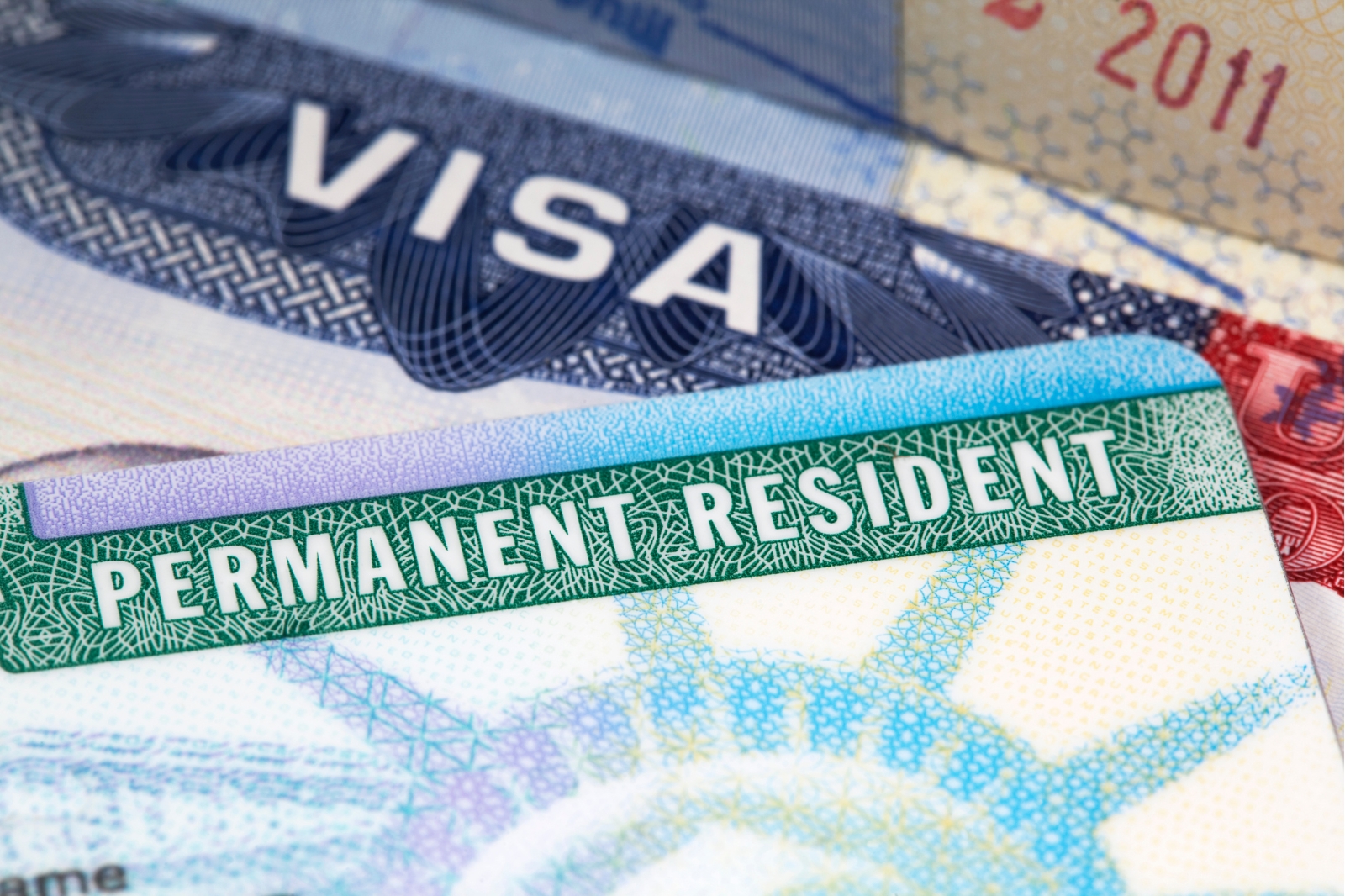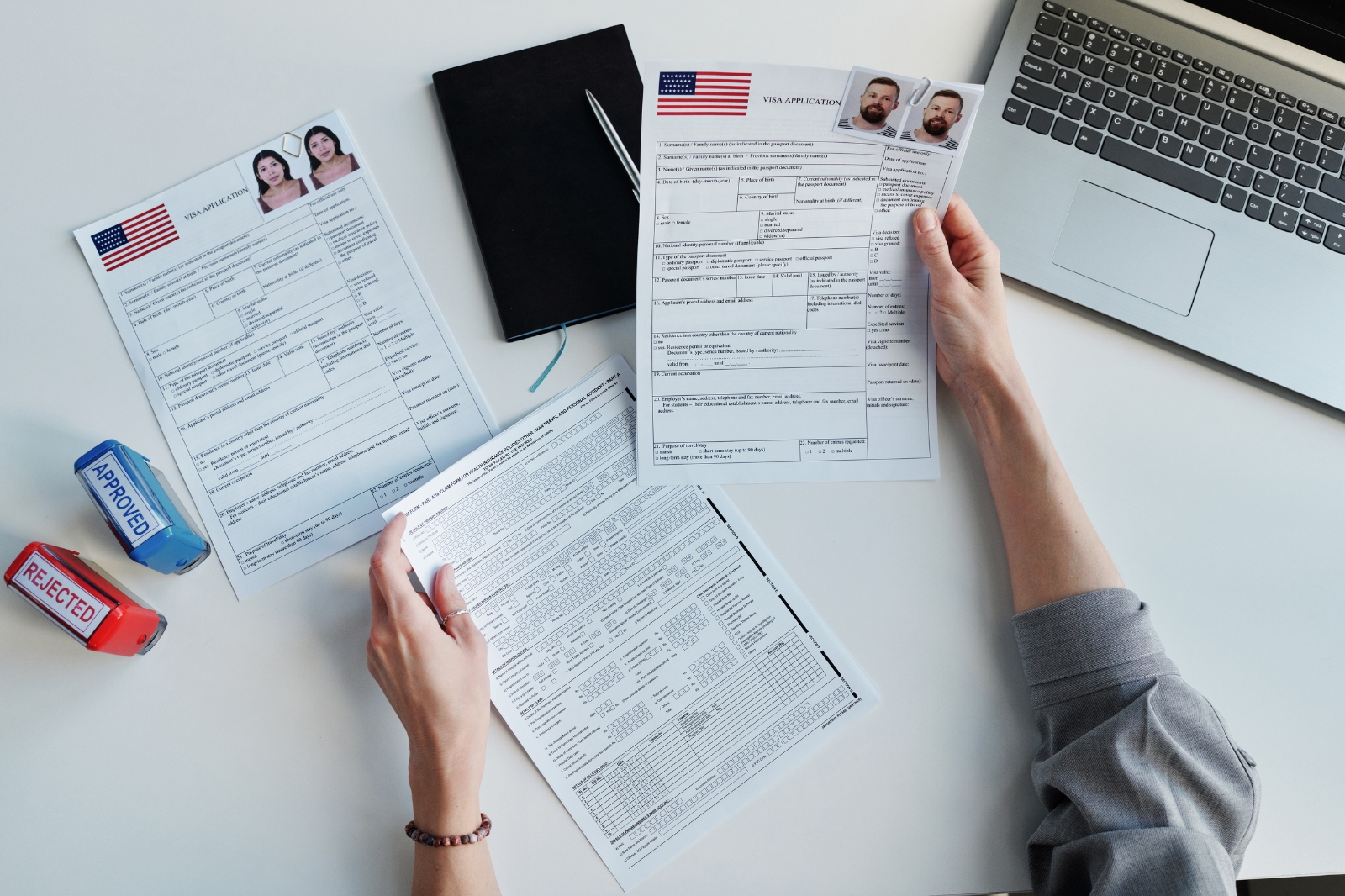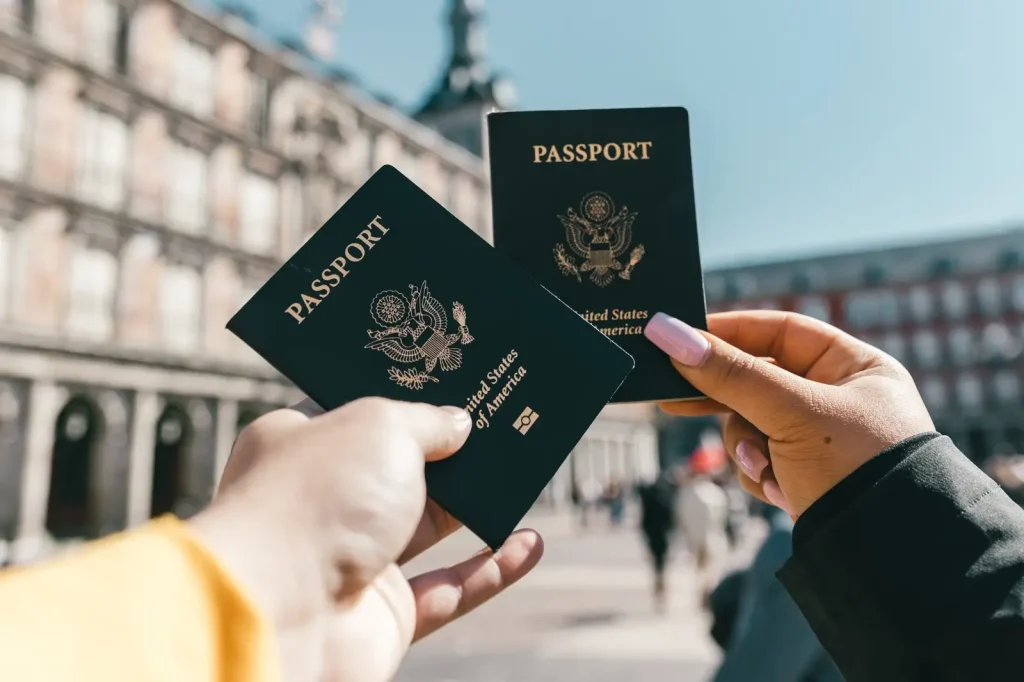
How to Petition for a Family-Based Immigration Visa to the U.S.
June 12, 2025
How to Petition for a Family-Based Immigration Visa to the U.S.
June 12, 2025
How to Get a Marriage Green Card in the U.S.: A Step-By-Step Guide
Bringing your spouse to the U.S. can feel like a heavy lift—emotionally, logistically, and legally. You’re trying to build a life together while navigating a system that isn’t exactly intuitive.
This guide to the U.S. marriage green card requirements is here to walk you through the process step by step, so you understand what’s involved, what to prepare for, and where to go next.
At Strang Immigration, we know how overwhelming the spousal green card process can feel—and how important it is to get it right. We’re here to guide you every step of the way.
Contact us to learn how we can support your unique situation.
What Is A Marriage-Based Green Card?
A marriage-based green card allows a foreign spouse of a U.S. citizen or lawful permanent resident to live and work legally in the United States. It grants permanent residency, and over time, it can lead to citizenship.
How the process works depends on where your spouse is living and how they entered the U.S.—those two factors shape which application path you’ll follow. Let’s review each path.
How to Get a Green Card: Adjustment of Status vs. Consular Processing

If your spouse is already in the U.S. and entered legally, they may be eligible to apply from within the country through a process called Adjustment of Status. This allows them to stay in the U.S. while their application is processed.
If your spouse is living abroad—or if they’re in the U.S. but aren’t eligible to adjust status—the process goes through a U.S. consulate in their home country. This is called Consular Processing.
Choosing the correct path is critical. It affects what forms you file, where the interview takes place, and how long the process will take. Have questions? Get in touch for advice specific to your unique situation.
Eligibility Requirements: Who Can Apply for a Marriage Green Card?
You must be legally married. Your spouse must be a U.S. citizen or green card holder. And your marriage must be genuine—not just on paper, but a real, shared life. That’s what U.S. immigration is evaluating.
Both spouses should also be prepared to provide documentation to support the application. This includes passports, a copy of your marriage certificate, proof of immigration status, and evidence of the relationship. We cover these in detail below.
The Green Card Process Step-By-Step: How The Application Process Works

Step 1: Is it a bona fide marriage? File Form I-130
This is the petition that establishes your relationship with your spouse. It includes proof that your marriage is legal and valid, along with documents like your marriage certificate, passport-style photos, proof of U.S. citizenship or residency, and relationship evidence.
Step 2: Wait for USCIS to review your petition based on marriage
Once Form I-130 is filed, you’ll receive a receipt notice confirming it’s being processed. If everything is in order, the petition is eventually approved and passed to the next stage based on your spouse’s location.
Step 3: Move forward with marriage green card application based on location
If your spouse is in the U.S.
You may be able to file Form I-485 (the green card application) to adjust status. Many couples also file for a work permit (Form I-765) and a travel document (Form I-131) at the same time.
These let your spouse work and travel while waiting for the green card decision. Every applicant must also complete a medical exam using Form I-693, conducted by a USCIS-approved doctor. The results are submitted in a sealed envelope and are required before the green card can be approved. After biometrics and processing, you may be called in for a joint interview.
If your spouse is outside the U.S.
Your case is sent to the National Visa Center, where you’ll submit civil documents and complete the DS-260 visa application. Your spouse will attend a green card interview at a U.S. consulate. Once approved, they’ll receive an immigrant visa, travel to the U.S., and receive their green card shortly after entry.
What is the Medical exam requirement for Green Card Eligibility
Every applicant must complete a medical exam with a USCIS-authorized doctor. This is required before green card approval, whether you're applying from inside the U.S. or abroad. It’s a standard part of the process and must be submitted in a sealed envelope with your other forms.
What Kind of Evidence Is Needed for Obtaining a Marriage Green Card?

USCIS wants to see that your marriage is real. This goes beyond a certificate. You’ll want to include documents that show your life together, such as:
- Joint bank accounts or credit cards
- Shared lease or mortgage
- Utility bills in both names
- Travel records and photos together
- Text or email communication
- Affidavits from family or friends who know you as a couple
- Insurance policies listing each other as beneficiaries
- Evidence of children together (if applicable)
Not every couple will have every item, and that’s okay. The goal is to paint a clear, consistent picture of your relationship over time.
What Happens After Approval of My Green Card through Marriage?
If your green card is approved less than two years after the date of your marriage, your spouse will receive a conditional green card. It’s valid for two years. Before it expires, you’ll need to jointly file Form I-751 to remove conditions and show that the marriage is still ongoing.
If your marriage is more than two years old at the time of approval, your spouse will receive a 10-year green card.
How Long Does the Marriage-Based Green Card Process Take?
Processing times vary. In general:
- USCIS review of Form I-130 takes 6 to 12 months
- If applying from abroad, the National Visa Center process adds several more months
- Adjustment of Status cases can take 12 to 24 months depending on your local USCIS office
- Interviews may be scheduled near the end of either process
If the application is complete and well-documented, that can help avoid delays. Missing paperwork, weak evidence of the relationship, or any past immigration issues can slow things down. Our immigration attorneys are here to support you with correct legal assistance.
Frequently Asked Questions About Obtaining a Marriage-Based Green Card

Can we apply if my spouse entered the U.S. on a tourist visa?
Possibly. If they entered legally and didn’t misrepresent their intent, they may be eligible to apply from inside the U.S. through Adjustment of Status. Timing and intent matter, so it’s best to consult before filing.
What if my spouse entered the U.S. without an immigrant visa?
That usually makes Adjustment of Status unavailable, but in some cases a waiver may be possible. This depends heavily on your specific history.
Do we need a lawyer to get a marriage green card?
It’s not required—but immigration law is technical, and every case is different. Many couples choose to work with an immigration lawyer to avoid mistakes that could delay or jeopardize their case.
How do we prove our marriage is genuine when applying for a green card?
A key part of the marriage green card process is showing that your marriage is bona fide—in other words, it’s a real relationship, not just for immigration purposes. USCIS will review the authenticity of the marriage through documents like joint financial records, photos together, messages, and affidavits from friends or family.
If you’re applying for a green card based on marriage, be prepared to provide consistent, honest evidence that your marriage is genuine and reflects a shared life together.
Can I get a green card without leaving the United States?
If you're married to a U.S. citizen or permanent resident spouse and entered the country legally, you may be eligible for a marriage-based green card through Adjustment of Status. This allows you to apply for a green card without leaving the country.
Not everyone qualifies—your eligibility depends on how you entered the U.S., your current status, and whether you’ve maintained legal presence. But for many couples, it’s possible to become a permanent resident while remaining in the United States without having to travel abroad for consular processing.
What should I know before I apply for a green card through marriage?
Before you apply for a green card, make sure you understand which process fits your situation—Adjustment of Status or Consular Processing. If you're already in the U.S., you'll likely file Form I-485, the Application to Register Permanent Residence or Adjust Status. This is submitted along with your supporting documents and filing fee.
If your citizen spouse is sponsoring you, the process may move faster than if your spouse is a green card holder, but both paths lead to permanent residence if approved.
Every case is different, so getting the details right from the start can save you time, money, and stress.
What happens while my green card application is pending?
While your green card application is pending, USCIS will review your forms and supporting documents, schedule a biometrics appointment, and may request additional information.
If you applied from within the U.S., you may also receive a work permit and travel document while you wait. Processing times vary, but staying organized and responding quickly to any requests can help avoid delays.
What happens after the green card arrives?
Your spouse becomes a lawful permanent resident and can live and work in the U.S! If the green card was conditional, you’ll need to take further steps two years later. After three years of permanent residency (if still married to a U.S. citizen), they may be eligible to apply for U.S. citizenship.
Need Help Navigating U.S. Immigration Law?

Applying for a marriage green card can be a long and emotional process. You’re not just filling out forms—you’re navigating a system that impacts your future together. The pressure is real, especially if you’re not sure which path applies to your case or how to prove your relationship.
At Strang Immigration, we’re here to help you understand your options and take the right next step. Every case is different, and we take time to listen before offering advice. Whether you’re just starting your immigration journey or ready to file, understanding your path is essential. If you're engaged and not yet married, you may want to consider the K-1 fiancé visa as your first step.
If you're trying to unite your family through immigration, get in touch.
We’ll help you understand the process and move forward with clarity and support.
ABOUT US

We are dedicated to protecting your legal rights at every stage of the process. Discover for yourself how our immigration attorneys can help you obtain a successful outcome



